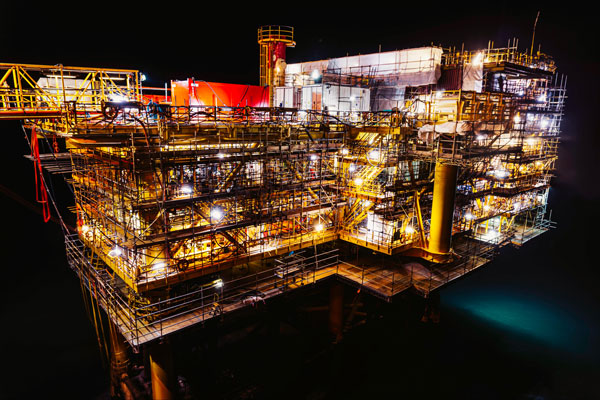Contents
Disciplines
Scaffolder
Introduction
Working offshore on an oil or gas rig means performing duties high above the water, often with little margin for error. When critical maintenance, inspections, or construction needs to be carried out at height, scaffolding provides a safe work platform. But erecting scaffolding over churning seas while battling the elements requires immense skill.
Offshore scaffolders are experts at rigging and securing intricate scaffold structures in challenging marine environments. They provide the literal framework to support other crews doing specialized work on platforms and rigs. Without the robust temporary decking and access points scaffolders construct, much of the essential upkeep for offshore operations could not be completed safely.
Yet the critical nature of managing safety for others while working at great heights under harsh offshore conditions means scaffolders cannot cut corners. It is a role requiring capabilities that combine extreme physical aptitude with attention to detail, planning, and caution.
In this post, we will highlight the unique role and responsibilities of scaffolders operating offshore. We will look at how they create safe overhead access for other crews, tackle complex builds in tight spaces, and operate safely hundreds of feet above the deck. Appreciation will be gained for their importance in keeping offshore platforms functioning efficiently. Even on massive rigs stretching hundreds of feet into the sky and sea, scaffolders truly are the backbone supporting it all aloft.
Role
Offshore scaffolders perform a highly specialized role central to the function and safety of oil platforms. Their key duties include:
- Planning out intricate scaffolding layouts using CAD software to maximize limited deck space. They strategically place scaffolding to avoid interference with existing infrastructure.
- Physically assembling complex scaffolding components like standards, ledgers, bracing and castings to incrementally create towers, platforms and overhead decking. This is extremely labor intensive work.
- Securing scaffolding properly to withstand severe weather conditions offshore. This includes heavy base structures, specialized anchors and additional bracing to account for wind shear and wave action at height.
- Methodically dismantling scaffolding after projects in order to inspect for damage and refurbish materials for reuse on future builds. No shortcuts can be taken.
- Consistently maintaining proper use of fall arrest systems and setting an example on safety for the rest of the crew. Mandating clipping into anchor points is a core responsibility when working at altitude.
- Training apprentice scaffolders onbest practices related to assembly, use of materials, inspection protocols and safety. Their guidance develops the future skilled workforce.
Offshore scaffolders are the backbone enabling necessary elevated access that drives maintenance, repairs and projects on platforms. The safety and productivity of offshore assets depends directly on their scaffolding expertise.
Conclusion
Offshore scaffolding is a niche trade requiring broad capabilities from physical strength to technical rigging skills. Scaffolders offshore undergo extensive training to work safely with complex scaffold systems secured in marine environments. They exemplify both daring and diligence in their work at height.
The next time you see the intricate networks of decking, ladders, and platforms on offshore rigs and platforms, recognize the skill it took to construct it all by hand over churning seas. That scaffolding allows for the completion of vital maintenance and repairs to keep operations online and productive.
So although their work is by nature temporary and destined to be disassembled once projects are done, offshore scaffolders provide the most permanent contribution of all—safe access that enables the very functioning of platforms and crews offshore. Their handiwork protects those working high above deck and prevents costly shutdowns.
Scaffolders are the backbone of offshore work, supporting all elevated activity through their strong scaffold structures. And not even hundred-foot waves and North Sea gales can shake the safety and access they build. Their standard for excellence means a stable working environment for all on the rigs they service.
